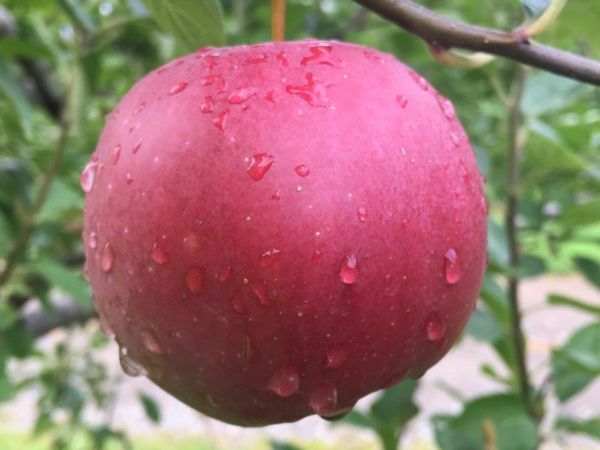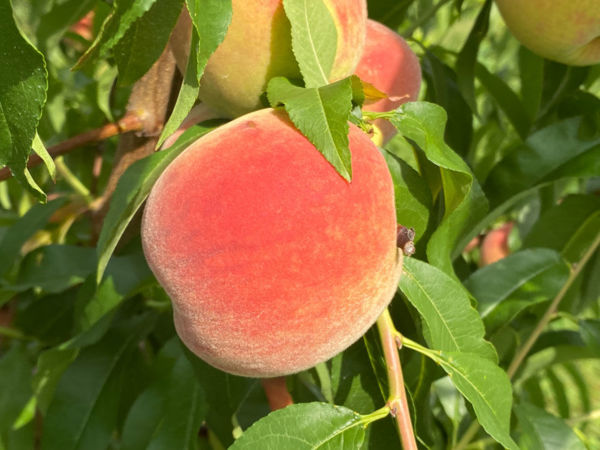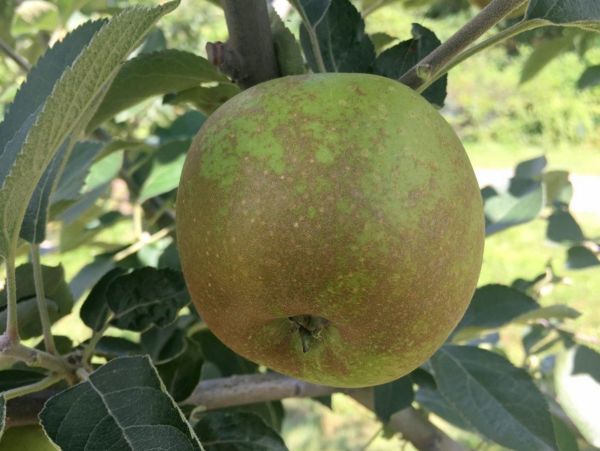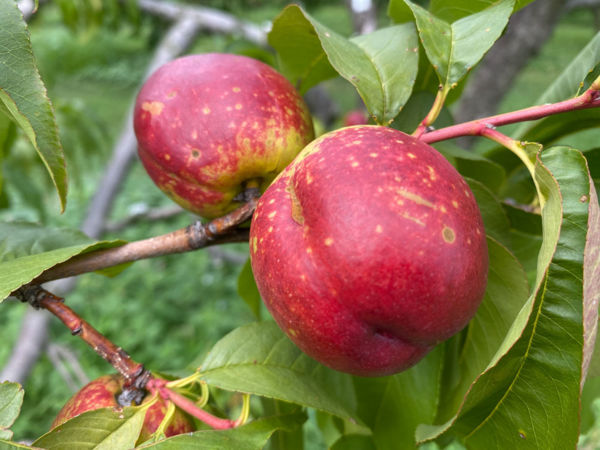An attractive, highly disease-resistant apple, ideal for organic growers.
Anthracnose Canker and Bull's-eye Rot
Fruits Affected
Also See
Fruit Tree Diseases and Pests: An IntroductionList of Common Fruit Tree Diseases and Pests
Apple anthracnose is a fungal infection caused by Cryptosporiopsis curvispora (AKA Neofabraea malicorticis) and other closely related fungi. It occurs primarily west of the Cascades, in areas with high rainfall.
Symptoms
Cankers on wood; spotted leaves; circular areas of rot on fruit.
Organic Treatments
Control of anthracnose cankers is mainly accomplished by pruning infected areas of a tree. This is best done in dry weather, before fall rains when the disease becomes active. Infected material should be burned. Certain cultivars are especially vulnerable to anthracnose: Spartan, Gala, Melrose, and Akane should be avoided in areas where this disease is prevalent. Copper sulphate, Neem oil, and fastidious orchard management will be necessary in high pressure areas.
Conventional Treatments
Please see the recommendations from WSU: Anthracnose
Disease Cycle
Apple anthracnose is a fungal infection caused by Cryptosporiopsis curvispora (AKA Neofabraea malicorticis) and other closely related fungi. It occurs primarily west of the Cascades, in areas with high rainfall. The fungus lives in cankers, and it spreads to ripening fruit and young growth during fall rains. New infections on wood will appear the following year. Although cankers only expand for one year, they continue to produce spores for two-three years. Open wounds are not required for new infections to become established on wood.
Visible cankers occur most frequently on small branches. A small, oval or circular, red-brown area will expand rapidly during spring. In summer, when the canker ceases to develop, a distinct crack delimits the infection from healthy wood and the canker shrinks and shrivels as healthy wood continues to grow around it. Dead tissue in the center eventually decays and drops out. In the summer of the year after infection, small cream-colored fruiting bodies will grow in the canker and release spores. When fruit is infected, it does not show symptoms until after harvest, when circular, flat lesions appear on the surface. These are brown, with a pale center that forms a "bull's eye."
For more information, see the Washington State University Factsheet on Apple Anthracnose.
Photos courtesy of FinnRiver Farm & Cidery, Chimacum, WA.
Featured Products
A few things we're loving right now...
A full-flavored, freestone white peach.
One of America's oldest apples, good for storage, baking, and cider.
A widely-grown, large, yellow-fleshed nectarine.

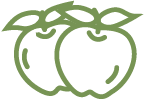



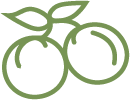
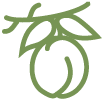

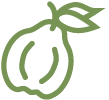
.jpg)

.jpg)

